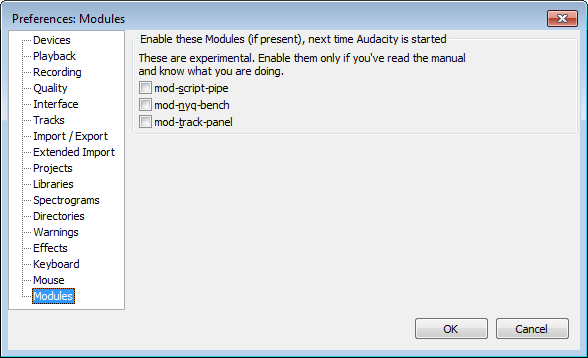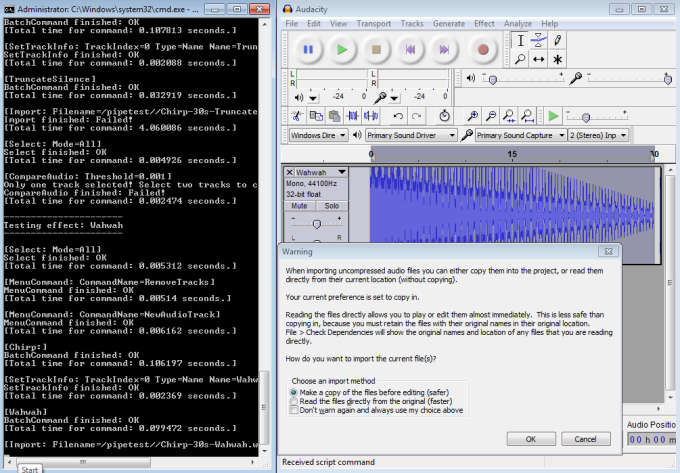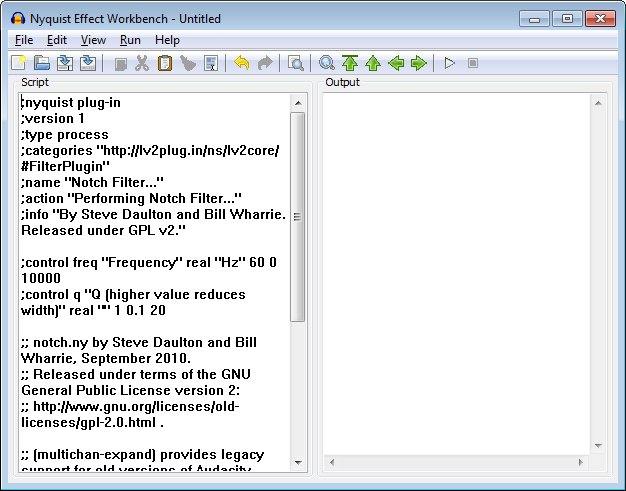Modules Preferences
From Audacity Manual

- Click on any of the other Preferences sections in the above image to go directly to that Preferences page.
Enable these Modules (if present), next time Audacity is started
| All the following modules are considered experimental. Don't use them unless you know what you are doing, and expect to find some issues if you do use them. |
- mod-script-pipe: This is a GUI plug-in that allows Audacity to be driven from an external Perl script. Commands are sent to Audacity over a named pipe. A sample Perl script is included in the latest Audacity SVN Development Code. Any scripting language that supports named pipes can be used in place of Perl. For more details, see Scripting.
- mod-nyq-bench: Nyquist Workbench is a graphical editor for writing Nyquist plug-ins and scripts. Plug-ins can be run directly from the editor. Nyquist Workbench is highly recommended (though not essential) for anyone interested in writing Nyquist plug-ins for Audacity.
- Current features include:
- Full support for Generate, Process and Analyze effects
- Auto load last file
- Built-in output/debug screen
- Parentheses matching.
- mod-track-panel: This is the start of an experiment that will ultimately provide a more flexible panel for the audio, label, MIDI and note tracks. It allows us to safely experiment with new additions to these core features and is currently only of value to developers. To use mod-track-panel, you must compile it from the latest Audacity SVN Development Code.

